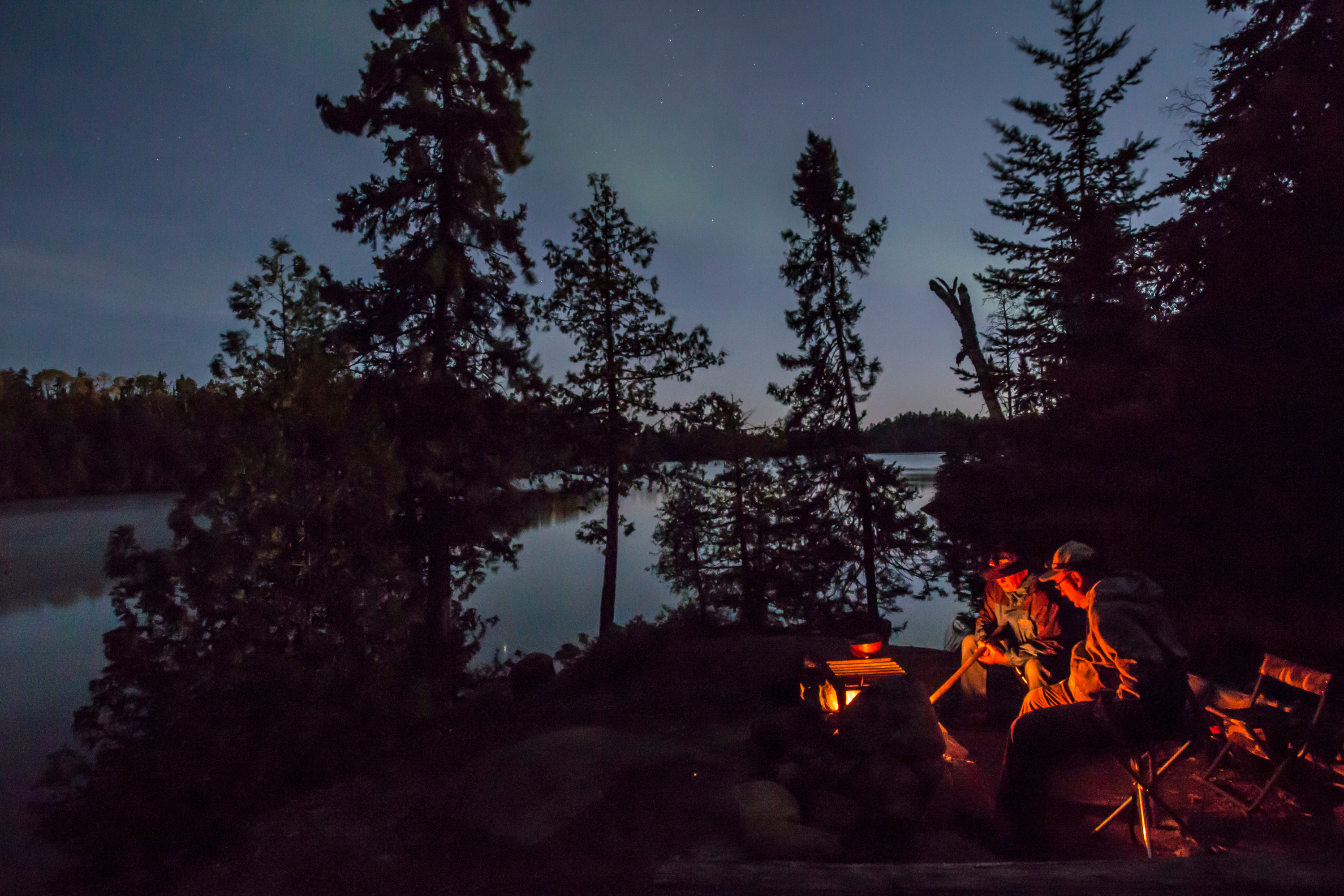
How to See the Northern Lights in the Boundary Waters
How to See the Northern Lights in the Boundary Waters
By Lauren Sauer
The northern lights are a show of atmospheric proportions unlike any other, handily dwarfing the quaint efforts of Fourth of July fireworks or any number of strings of holiday lights. And, as the northernmost state in the lower 48, they can be admired in their full glory right here in Minnesota.

Northern lights over the Gunflint Trail / David Johnson
Accessible primarily by canoe, the Boundary Waters Canoe Area Wilderness is a vast area of protected land along the U.S.-Canada border that’s home to over 1,100 of the world’s purest lakes. As Minnesota’s first designated Dark Sky Sanctuary, it’s also the ideal place to witness the northern lights.
I grew up camping in this remote wilderness regularly—paddling deep into the forest to set up a tent beneath the stars—but only saw the northern lights once.

An evening campfire in the Boundary Waters as the northern lights glimmer above / Gary Hamer
It was late August, and I was camping with my family on a small lake deep in the Boundary Waters. We were miles from a cell signal and even further from the closest flush toilet.
Early one chilly morning—around 3 a.m., I think—my dad shook the whole family awake to come outside. His voice made it sound urgent, so we reluctantly pulled on our warmest socks and sweatshirts and strapped on our headlamps.
We stumbled out of the tent to the lakeshore, where we were greeted by a most awesome sight.

Northern lights over Boulder Lake near Duluth / Jonathan Dyess
Across the northern side of the star-filled night sky, broad streaks of bright green were flaring and rippling into one another, reflecting gracefully off the glass surface of the water like figure skaters. Standing under thousands of stars with vibrant light swirling high up in the Earth’s atmosphere, I felt so wonderfully small.
We watched the lights dance across the sky in silence for what could’ve been a few minutes or a few hours, soaking in the sight with our mouths slightly agape. The show went on like this long after we zipped back into our sleeping bags, the bright green light playing off the walls of our tent as we struggled to get back to sleep.
A disruption most divine.

A nighttime campsite in the Boundary Waters / NAZpicture
Nature has a wonderful way reminding us where we stand in the greater scheme of things, and of all the earthly wonders I’ve witnessed, nothing felt quite as grand as the aurora.
Sure, there’s a perfectly good scientific explanation for how it occurs, but that’s not what inspires us to venture deep into the wilderness to witness the show, and it was miles from my mind as I stood in silent amazement, trying my best not to blink as the stellar lights whirled before my eyes.

See the Northern Lights at Voyaguers National Park in northern Minnesota / Martha Shuff
Tips for Seeing the Northern Lights
Planning a trip around the aurora borealis is notoriously tricky, and no matter how much planning goes into your trip, there’s no guarantee you’ll see the northern lights. But you can still tip the odds in your favor.
There’s no decisive consensus over the best time of year to view them, but given the longer, clearer skies of fall and winter, your odds of catching them get better from September through March.
The sky also needs to be clear and dark enough for them to be visible, which requires getting far away from any traces of light pollution. Venture into the northernmost reaches of Minnesota for the best borealis-viewing spots, like the Boundary Waters, Voyageurs National Park, Lake of the Woods and all of Cook County.

